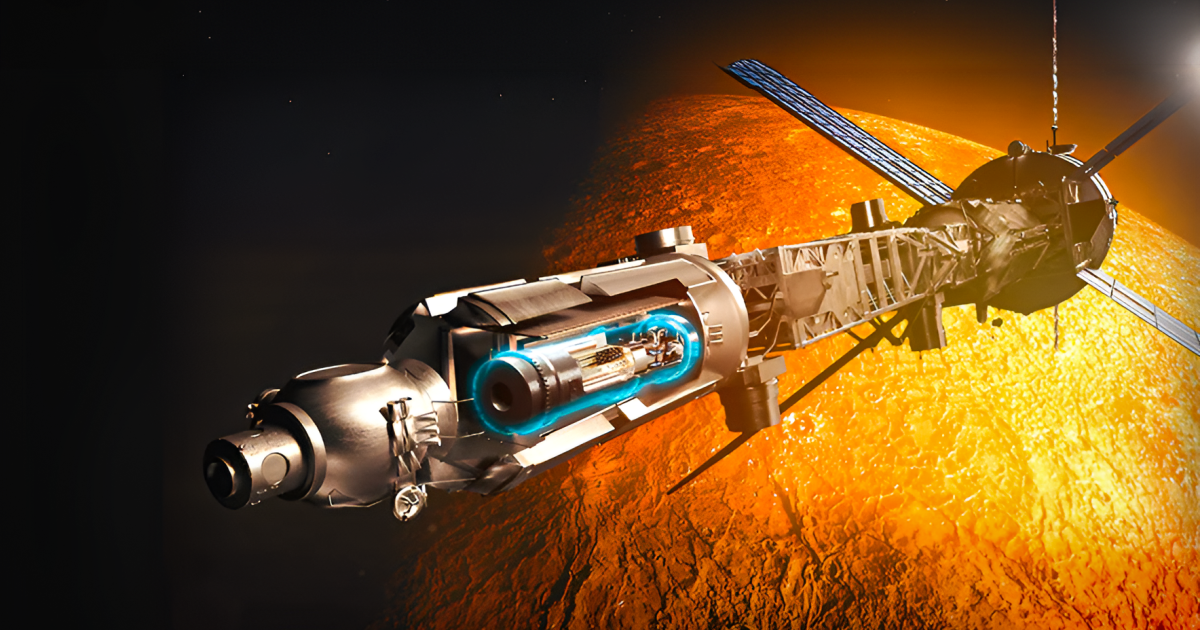Rolls-Royce has received an additional £4.8 million (US$6.2 million) in funding from the UK Space Agency (UKSA) to develop key technology for a nuclear micro-reactor that could one day power lunar bases and spacecraft propulsion.
In the 1969 science fiction film Doppelganger (AKA Journey to the Far Side of the Sun), when the hero docks with his orbiting interplanetary spaceship in the last act, he’s greeted by the Rolls-Royce logo on the ship’s nuclear rocket engines. Over five decades later, that bit of cinematic prognostication is pushing toward reality as Rolls-Royce moves forward with plans for its space nuclear Micro-Reactor that could, among other things, power spacecraft propulsion systems.
The latest award from the UKSA through its National Space Innovation Programme (NSIP) brings the total funding well towards meeting the £9.1million (US$11.7 million) projected total cost of the project. According to Rolls-Royce, the whole system design will be completed in 18 months with the help of academic collaborators at the University of Oxford and Bangor University, with the first orbital test of the reactor slated for before the end of the decade and testing of a Moon version a few years later.
Rolls-Royce Micro Reactor
The purpose of the Micro Reactor is to create an energy dense, reliable, and extremely portable power source for not only long-term exploration and scientific missions on the Moon and in deep space, but as a marketable British system for commercial customers for both space and terrestrial applications.
The reason a nuclear reactor is needed is that conventional solar power, fuel cells, batteries, and the like are either only suitable for short terms or are intermittent in their power generation. Worse, they don’t produce that much energy – and energy is going to be needed in increasingly greater quantities over the next century.
The Micro-Reactor differs from a Small Modular Reactor (SMR) in that the former is much smaller, more streamlined and portable. Where the SMR generates 0.5 GW of power and needs an area covering two football pitches for all its gear, the Micro-Reactor produces one to 10 MW and is small enough to be stuck on the back of a truck. This means it can not only be used at a planetary base, but moved from place to place or even power a rover indefinitely.
Rolls-Royce
Completely independent of its environment, the Micro-Reactor is fueled by pellets made of layers of enriched uranium or plutonium, carbon, and ceramic. These are set in tubes in a geometrical graphite core that helps regulate the nuclear reaction, conduct heat from the fuel, and act as a passive safety control. Bespoke heat exchangers make the reactor lightweight and move the heat to where it can be turned into useful power.
This power has a large number of applications, including bases on the Moon or Mars, powering space stations and deep-space vehicles, and for nuclear propulsion systems. These can be electric propulsion, like ion drives, or direct thermal nuclear rockets where a reaction mass, most likely methane, is heated to generate thrust.
This will not only allow for sending missions deep into space with larger payloads or higher velocities, it will also allow orbital satellites to shift orbits quickly for satellite maintenance or defense against hostile actions. Heavy shielding isn’t needed for such spacecraft because the reactor/engine can be kept at a distance from the payload or habitat modules by a long boom, giving the vehicle a dumbbell shape.

Rolls-Royce
“We are delighted to win this award from the National Space Innovation Programme and to be continuing our collaboration with the UK Space Agency,” said Jake Thompson, Director of Novel Nuclear & Special Projects, Rolls-Royce. “This funding is a pivotal point in our Micro-Reactor program and will accelerate our technology progression, bringing us a step closer to powering inspiring human endeavors in space.
“The future of space exploration is greatly dependent on the ability to generate high levels of consistent power and our nuclear Micro-Reactor is the solution that will offer safe, reliable and flexible power to a broad range of space missions.”
Source: Rolls-Royce







